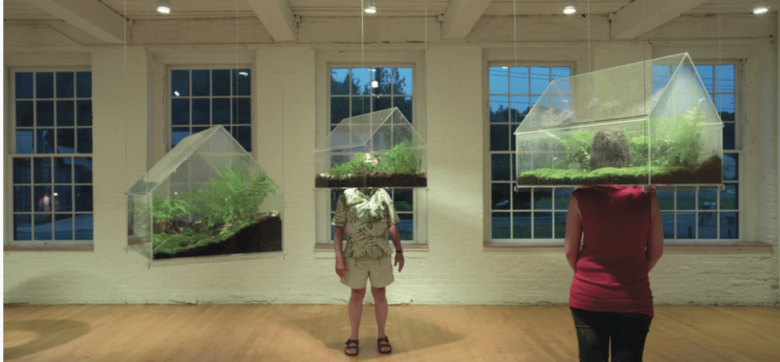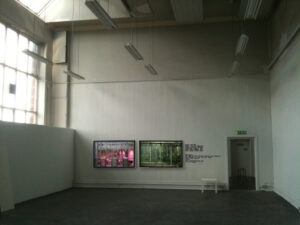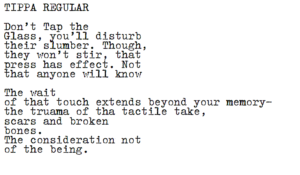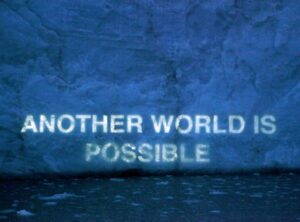Viewers experience the landscape at eye-level by placing their heads within the terrarium-like structures. The experience is multi-sensory and immersive, with muffled sounds and smells of earth and moss. Viewers find themselves in intimate proximity to soil, plants, and each other, sharing the same air.
I continue to develop this series of works which I think of collectively as “Personal Biospheres.” People place their heads inside the biospheres, becoming part of the landscape and being immersed in the smells and up-close views of the plants, soil, and tiny creatures inside the biosphere. The biospheres re-situate the landscape within plastic, while also giving the viewer new intimacy with the land. The image of nature enclosed in plastic has a dystopic element to it, referencing a sense of alienation from nature. At the same time, when people experience the work they often comment on the feeling of sensory immersion and shift in scale that occurs when you put your head inside. The biospheres are dependent upon human care to survive. When standing inside the biospheres, people can become aware of this mutual dependence as they share the air inside with the small landscape of plants and soil.
The works have evolved from the “Portable Personal Biosphere” -a wearable acrylic dome that fits over the head and contains a miniature landscape of soil and mosses- to larger installations in which multiple people can experience these self-contained environments. In “Biosphere Built for Two,” “One Big House,” and “Metropolis” two to four people can occupy the biosphere simultaneously. The closeness of the plants and mosses is matched by a closeness and intimacy to other people that can be alternately comforting and unsettling.
In each installation the works are new and unique, as the planting plan is determined based on local conditions. The plants are selected to reveal local ecologies, or highlight hybrid landscapes. As these works have been installed in diverse international locations, the development and planning of the installation has become more part of the work. For example, in a recent installation in Buenos Aires, I worked with local students on the design and planting of the works, and they re-purposed the structures as new artworks after the exhibition was done. Thus, the institutional partner, plant growers, participants and others involved in creating the work are essentially co-creators of the artwork.





